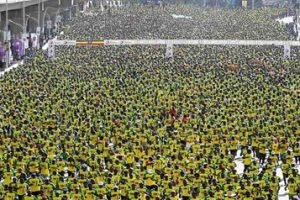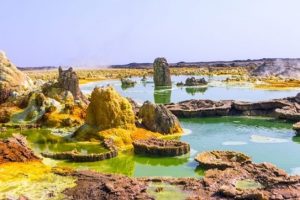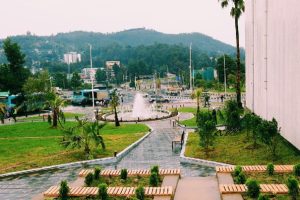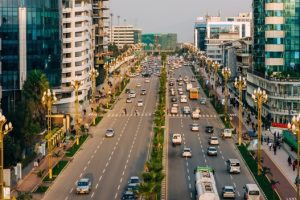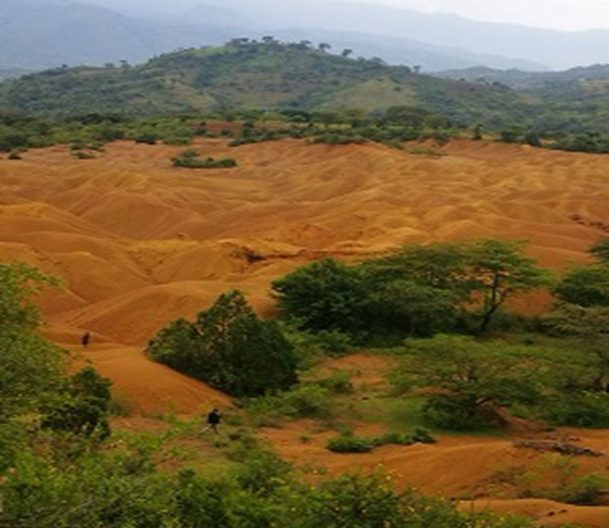
BY TEWODROS KASSA
Ethiopia has numerous natural and man-made tourist destinations that are familiar across the world including the Rock Hewn Churches of Lalibela, Gonder castles, Aksum obelisks, the walled city of Harar, Abay Fall (Tis Abay), Sof Omar Cave among others. Most of the times, various local and international tourists prefer to visit the aforementioned destinations due to their long lasting discovery and promotional activities.
On the contrary, there are numerous tourist attractions situated across the country but are not still well promoted; thus, less visited by local and international tourists. However, the Ethiopian Government has now started new campaign to develop the destinations and harness the available tourism potentials through undertaking a number of marketing and promoting activities, developing new tourist destinations by allocating the necessary budget and human resource to the sector.
Currently, the tourism sector is among the five pillar areas of the national development strategy that has been given due priority. To realize this objective, the Ministry of Tourism, state tourism bureaus and other stakeholders are working hand in hand.
Recently, a group of media professionals, tourism experts and tour guides have visited the Mogo Kaka tourist destination, one of the unnoticed potential tourist attractions located in Gamo Gofa Zone of the Southern Nations, Nationalities, and Peoples’ State.
Gamo Gofa Zone is known with its tremendous natural and cultural assets. And the zone is undertaking various measures to utilize its diversified cultural assets. The visiting team to the area has observed the efforts being made to make these national treasures tourist attraction spots.
Gamo Zone Tourism Destinations and Services Team Leader Gemechu Bulbula told the Ethiopian Press Agency (EPA) that Mogo Kaka is a colourful, marvellous and wonderful tourist attraction site. The Zone is doing more towards introducing this unique tourist destination.
On her part, Arba Minch Surrounding Woreda Culture and Tourism Bureau Head Haregua Petros said that the woreda is doing its level best to make Mogo Kaka one of the tourist destinations visited by tourists regularly. The Bureau is working on how to introduce Mogo Kaka and other man-made tourist destinations in the area to be well promoted and attract numerous tourists, both domestic and foreign visitors.
Currently, the area’s infrastructural conditions are being improved so that local and international tourists can come and visit this area. Tourists can hike on foot to Mogo Kaka after making their journey through vehicles.
Mogo Kaka looks like a pile of sand, but when you step on it, it does not slide. It is difficult to walk side by side on the canals and the hill of Mogo Kaka. There is also a situation where the trip on the hills is like a tightrope walk. Some have described the place as a sand dune in the Sahara Desert. Indeed, when compared to the images of some Arab countries and the regions of the Sahara Desert, it looks like a pile of sand accumulated by the wind.
What is surprising is that the nearby area is green, but there are no grass trees or other plants. Anyone happened in the Mogo Kaka hill will have the opportunity to discover a desert looking area but not a real desert as it is an area with a green environment. There are a lot of people standing and looking at the scene. Journalists take pictures.
Arba Minch Surrounding Woreda Culture and Tourism Bureau Tourist Destinations Development Expert Muluken Gobena told EPA that the Zeise and Gidicho ethnicities comprise the largest number in the Gamo Zone.
The Zeise community is found near Arba Minch Town and has their own traditional administration system until occupied by the Emperor Menelik II. Its current population exceeds 60,000. Zeisite is the language of the ethnicity.
This language belongs to the Omotic language family. The Zeise ethnic group has its own rituals of mourning, happiness, reconciliation, and more other unique cultures. Mogo Kaka is located at an altitude of 1,760 meters above sea level and covers 40 hectares of land. Mogo Kaka is neither ash nor sand; it is of a special nature. Mogo is the name of a leader who ruled the area or kebele in the past, and Kaka means strong nature that is neither stone nor soil.
According to Muluken, information indicates that Mogo Kaka was formed due to a volcano several years ago. They say that the upper part of the soil has been eroded away and this part that looks like a hole is left alone.
He pointed out that if lodges and resorts are built in the area and other tourist facilities are constructed, the site can be an additional tourist attraction for the area, the zone and the country.
In the past, the area has been neglected. Nothing has been done to promote the place at the desired level. Currently, different YouTubers and social media activists are promoting the area’s untapped tourism endowments.
In sum, the area is known for producing different types of crops, bananas, avocados, cotton, honey as well as cattle breeding. If the area is developed as a tourist attraction, the local communities can also benefit. This is the time when special attention is being paid to the tourism sector. This place can be used as a tourist attraction and it is being worked at the woreda and regional level. Special promotion work is being done.
THE ETHIOPIAN HERALD FRIDAY 18 NOVEMBER 2022


